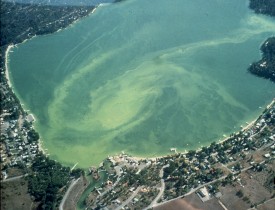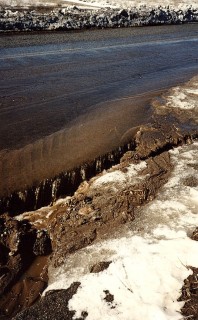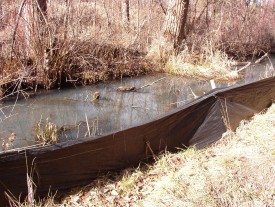By BiJay Adams
In the 1960’s, residents at Liberty Lake could not help noticing that nuisance blue-green algae blooms were increasing in the lake each year. By the late 1960’s, tons of decaying aquatic weeds and dried algal mats were being removed from the lake. Residents were concerned about the lake’s health and water quality, and turned to the Property Owners’ Association for help. In 1973, the Liberty Lake community petitioned, voted for, and elected commissioners to a special purpose sewer district. Since 1973, the Liberty Lake Sewer and Water District (LLSWD) has worked hard to protect the health and beauty of the lake that has drawn many residents to the area.
The District is responsible for maintaining Liberty Lake’s water quality. Primarily, this has meant providing sanitary sewer service to homes on or near the lake, but it also includes managing stormwater around the lake. Any development on land served by the District within the lake’s watershed must comply with the LLSWD’s stormwater management requirements which are in line with, or more stringent than, those of neighboring jurisdictions including Spokane County. The District observes the lake’s shoreline regularly and reports to local and state agencies for enforcement alterations that could harm the lake’s water quality or shoreline health. Through its stormwater management program, the District educates lakeside property owners about ways to protect shoreline ecology while maintaining water quality.
A key tool for protecting Liberty Lake and preserving its water quality has been the lake’s restoration plan. As part of this plan, the Liberty Lake Sewer and Water District adopted its first stormwater management ordinance in 1981, updated in 1985, 1987, and 1992. In 1994, the District received a Washington State Centennial Clean Water Grant to develop a stormwater management plan, and hired Century West Engineering Corporation to prepare the plan in 1996. Under RCW 57.08.005(10), LLSWD is authorized to reduce, minimize, and/or eliminate pollutants from lakes, rivers, and groundwater, including those in stormwater.
The comprehensive stormwater management plan provides guidance for establishing and maintaining water quality within the District’s boundary and the lake’s watershed. The plan focuses on:
- Reducing point and non-point source pollutants discharged to receiving waters to protect or restore beneficial uses and meet water quality standards.
- Reducing damage from flooding and inadequate flood hazard management.
- Reducing flushing of wetland waters into the lake to protect beneficial uses and meet water quality standards.
- Educating residents, landowners, developers, and contractors about best management practices for stormwater and how they can affect water quality in the watershed.
- Preserving the natural watershed to reduce flooding impacts and meet water quality standards.
The District’s Stormwater Resolution authorizes the LLSWD to implement policies for stormwater management within its boundaries. These policies require a stormwater drainage plan, plan review and approval, and stormwater barriers (silt fences) for properties within the District’s jurisdiction. The District may require a fee for reviewing plans and inspecting stormwater swales, and must approve a plan before a building permit can be issued. If proposals do not meet the requirements of the Stormwater Resolution, the District may withhold or discontinue water and sewer service.
These stormwater management measures are just one part of the District’s work to reduce and prevent nonpoint source pollution, including diverting runoff, limiting or banning lawn fertilization, and preventing disruption of the watershed. The District also promotes protection and prevention through watershed studies and environmental education programs. These include water conservation and landscape workshops that emphasize low-water gardening, and newsletters or news articles that explain the relationship between watersheds and lakes, water quality, and human actions. The District’s work in promoting and encouraging best management practices helps residents around Liberty Lake preserve its natural watershed and protect beneficial uses and water quality now and into the future.












